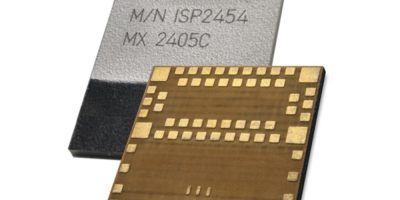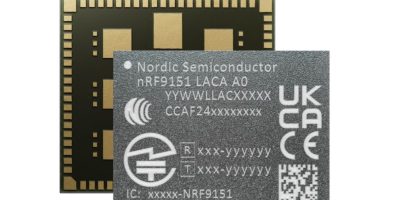ST’ Page EEPROM combines the power efficiency and durability of an EEPROM with the capacity and speed of a Flash memory, creating a hybrid memory for applications that face extreme size and power constraints.
The new memories address growing demand for storage in embedded applications, needed to support increasingly sophisticated features and run data-hungry edge-AI algorithms. One example is behind-the-ear hearing aids, where Page EEPROM can reduce the bill of materials and help create products that are slimmer and more comfortable to wear.
In addition to wearables, Page EEPROM is ideal for applications such as healthcare devices, asset trackers, e-bikes, as well as other industrial and consumer products. “The intelligent edge has evolved quickly and is profoundly changing demands on embedded memory storage density, performance, and power consumption,” said Philippe Ganivet, STMicroelectronics EEPROM product line manager. “Our new Page EEPROM is the perfect ultra-low-power memory to complement a microcontroller for remote IoT modules that operate on battery power.”
“ST’s Page EEPROM is the perfect non-volatile memory, a true best-of-both worlds solution that enabled us to achieve the ambitious targets we set when creating the latest generation of our flagship product family of GPS trackers, IoT devices, and all other designs where high performance, high reliability, small size, and low power are required,” said Patrick Kusbel, owner of BitFlip Engineering, one of the first customers to use the new memory ICs. “The M95P is up to 50 times faster yet consumes as little as one-tenth the power and delivers five times the reliability — at 500k writes compared to 100k writes — typical of other parts we used before. It’s a game changer.”
ST’s Page EEPROM family offers densities of 8Mbit, 16Mbit, and 32Mbit, greatly increasing storage over standard EEPROM devices. Embedded smart page-management allows byte-level write operations for processes like data logging, while also supporting page/sector/block erase and page-program up to 512 bytes for efficiently handling firmware over the air (OTA) updates. The devices also allow buffer loading, which can program several pages simultaneously to cut the time for loading software in production. The data-read speed of 320 Mbit/s is about 16 times faster than standard EEPROM, while write-cycle endurance of 500,000 cycles is several times higher than conventional serial Flash.
Also featuring a novel peak-current control, Page EEPROM minimizes power supply noise and prolongs the runtime of battery-operated equipment. The write current is below that of many conventional EEPROMs and there is also a deep power-down mode with fast wakeup that reduces the current to below 1µA.
Longevity is assured, with 100-year data retention. The devices are included in ST’s 10-years product longevity program that guarantees long-term product availability.
The X-NUCLEO-PGEEZ1 expansion board and X-CUBE-EEPRMA1 software package are available now, for users to learn how to interact with Page EEPROM and adopt the new devices in application designs. The software includes a demonstration application that shows how to test the memory’s hybrid architecture and quickly build a proof of concept.
The M95P08, M95P16, and M95P32 Page EEPROMs are in production now and available from $0.50 for the 8Mbit M95P08. The X-NUCLEO-PGEEZ1 is ready to order from the eSTore at the budgetary price of $40.00.







